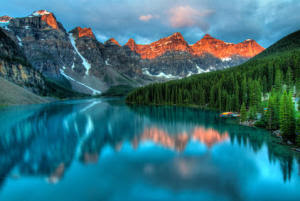
Though churning smokestacks, cud-chewing cows and gasoline-burning vehicles are contributing constantly to greenhouse gas emissions, there are also many processes that do the reverse, pulling molecules like carbon dioxide out of the atmosphere. One of these is chemical weathering, which occurs when rock turns into soil. Carbon dioxide molecules and rain combine to dissolve rock, and the weathering products, including sediment, eventually make their way through waterways to the ocean where some become trapped on the ocean bottom and in coral reefs and seashells.
For years, geologists believed that mountains, due to their steep slopes and high rates of erosion, were large contributors to this “carbon draw down” effect. But a new study led by the University of Pennsylvania’s Jane Willenbring suggests that mountains do not play a significant role in this activity, turning a geological paradigm on its head.
Willenbring, an assistant professor in the Department of Earth and Environmental Science, led the research, working with Alexandru Codilean of the GFZ German Research Center for Geosciences and Brandon McElroy of the University of Wyoming.
“High mountains have been the go-to field area for people interested in studying how much sediment goes into the ocean and how tectonics perturbs global climate,” Willenbring said. “But what we found was that mountains contribute only a small amount of the total sediment produced on Earth.”
This finding, published in the journal Geology, directly challenges previous studies, which suggested that small mountain rivers contributed most of the sediment to the world’s oceans.
What these other scientists neglected to account for, according to Willenbring, was that even the steepest, most erosion- and weathering-prone slopes take up only a tiny fraction of Earth’s surface. So while these steep protrusions have very high rates of carbon absorption per unit area, they are far outstripped by the much more abundant expanses of gently sloping land.
“These small mountain streams are packing a big punch for their size,” Willenbring said. “But even though they have a lot of erosion going on, the amount of the Earth covered by mountain ranges is too small to produce the amount of sediment that less steeply sloped areas produce.”
The previous studies lacked access to a new investigative technique that was developed relatively recently. The method involves an examination of cosmogenic nuclides, which are rare forms of chemical elements produced only when supernovas explode, sending high-energy radiation to Earth and breaking up other atoms. Counting these chemical isotopes allows researchers to determine how long sediment has remained in a particular watershed over long time periods.
In contrast, techniques used previously, which involve physically measuring sediment flow in rivers and streams, only capture a snapshot of sediment erosion and deposition rates over a short time frame.
The researchers analyzed published data on cosmogenic nuclide concentrations from around the world to determine the levels of sediment flux over a time frame of thousands to hundreds of thousands of years. They also gathered topographical data to determine the slopes of the surrounding areas. They then extrapolated these rates of sediment deposition to the whole Earth’s surface.
“What the cosmogenic nuclides tell us is that chemical weathering still happens in these low sloping areas,” Willenbring said.
Other scientists had believed these gently rolling or flat areas, such as floodplains, to be “trappers” of sediment, but the research team’s analysis demonstrated that, despite being areas of net deposition, they are in fact still drawing large amounts of carbon dioxide from the atmosphere.
Given these findings, geologists interested in understanding the contribution of erosion to climate fluctuations may want to spend less time on mountaintops and more time in big, lower-lying rivers like the Mississippi and the Amazon, Willenbring said.
“We’re going to need to start studying ‘boring’ rivers if we’re going to understand carbon and sediment cycling.”
Note : The above story is reprinted from materials provided by University of Pennsylvania.










